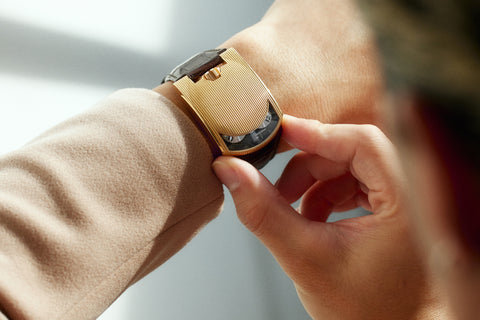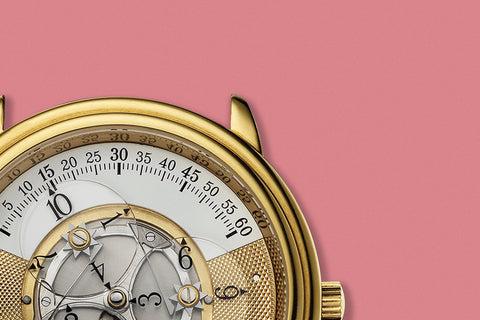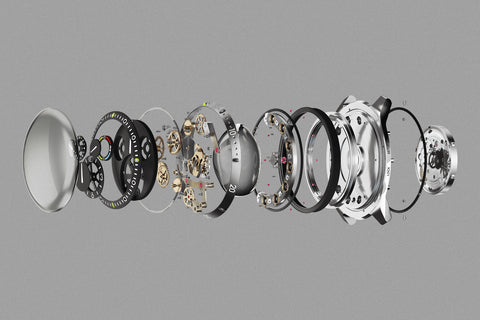It is not often that we come upon a watch that marked the genesis of one of the original independent brands. Urwerk was born out of conversations about space, time, and design between third-generation watchmaking brothers Felix and Thomas Baumgartner and their friend and conceptual artist Martin Frei at a house party in Berlin in the mid-1990s.
It yielded pieces such as the UR-102, often referred to as the ‘night watch’ and ‘Sputnik’. While the UR-101 design preceded it, it was the UR-102 that became the first serially produced watch from the brand after it was exhibited at Baselworld in 1997. Famously, the watch was presented on a camping-style hotplate display, a conceptual display designed to convey the message that the young makers behind the brand were ‘cooking up something hot’. It was a fresh approach, even within the nascent independent scene.
However, its inspiration was rooted in the past. Its wandering-hour time display was much like the one in the 17th-century night clock designed for Pope Alexander VII by the Rome-based Campani watchmaking brothers.
The UR-102 represented a distinctly minimal expression of this technology. The only part of the watch the wearer interacts with, the 180° window, which is traversed by an oval-shaped aperture with a digital hour display, is also a poetic reference to the earliest attempts at time-telling, based on the position of the sun in the sky. This is believed to have originated in the Sumerian city of Ur and serves as a philosophical basis for the brand.
Underpinning it is a system based on three rotating discs mounted on Maltese cross bases, with just one of the discs rotating every hour while the other makes its way across the visible display, graduated into quarter hours. There are four smaller markers in between on this scale to aid more precise time-reading. This was a thoroughly experimental exercise to see what a modern watch could be. The window wears satiné circulaire in a shade of vibrant blue.
The pebble-shaped stainless-steel case is 38mm wide and 12mm tall at its highest point. While the brand would later choose to experiment with the latest production techniques, in the early days it was limited by a shoestring budget. As a result, early cases such as this one were handcrafted. The monocoque cases wear an even mirror polishing. The four-pronged, fin-shaped lugs are reminiscent of the four antennae on the Soviet satellite Sputnik, a likeness that has meant that the nickname has stood ever since the watch was first revealed.
The caseback is brushed and secured by six screws and simply features engraved markings of the brand, serial number, and city of origin—Geneva. Powering this minimal setup is an automatic winding calibre.
While 50 examples were planned in stainless steel, with another 50 to be made with PVD coating, far fewer were produced in the end. This was due to production limitations the makers faced. This example, which was created in 1998, is not only an early example but one of only a small number in existence today. It comes with a certificate of origin from the brand as well as its original box.
A bespoke leather strap is currently being manufactured and will be available in the coming weeks, along with a corresponding Urwerk strap for which an order has been placed. At present, no strap is available.
If sold within the United Kingdom, this Urwerk UR-102 will be subject to 20% VAT

















































































































































































































